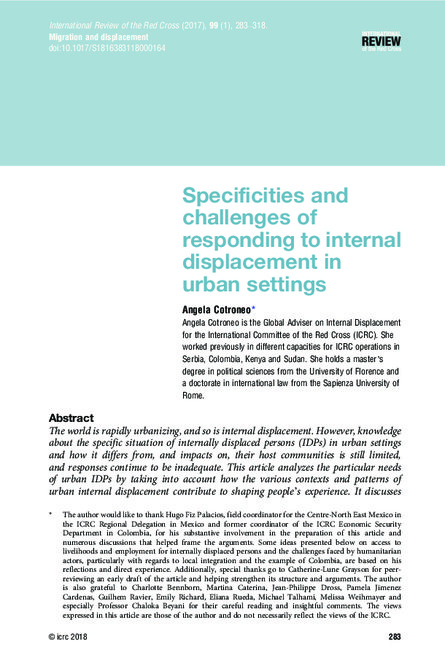
The world is rapidly urbanizing, and so is internal displacement. However, knowledge about the specific situation of internally displaced persons (IDPs) in urban settings and how it differs from, and impacts on, their host communities is still limited, and responses continue to be inadequate. This article analyzes the particular needs of urban IDPs by taking into account how the various contexts and patterns of urban internal displacement contribute to shaping people's experience. It discusses three key challenges that humanitarian actors are faced with in developing effective responses: identifying and reaching IDPs in urban settings, addressing their urgent protection concerns, and supporting their local integration. It concludes by pointing out the need for methodological and operational guidance on how to bring together area-based approaches that account for the impact of displacement on entire urban communities, and tailored approaches addressing IDPs' specific needs in urban settings. The need for stocktaking exercises and more effective sharing of experiences among practitioners, municipal authorities and policy-makers is also underlined.
Links
Resource collections
- UN Habitat - Urban Response Collection
- Urban Response - Urban Crisis Preparedness and Risk Reduction
- Urban Response Collection - Community Engagement and Social Cohesion
- Urban Response Collection - Economic Recovery
- Urban Response Collection - Environment and Climate Change
- Urban Response Collection - Housing, Land and Property
- Urban Response Collection - Urban Crisis Response, Recovery and Reconstruction
- Urban Response Collection - Urban Resilience